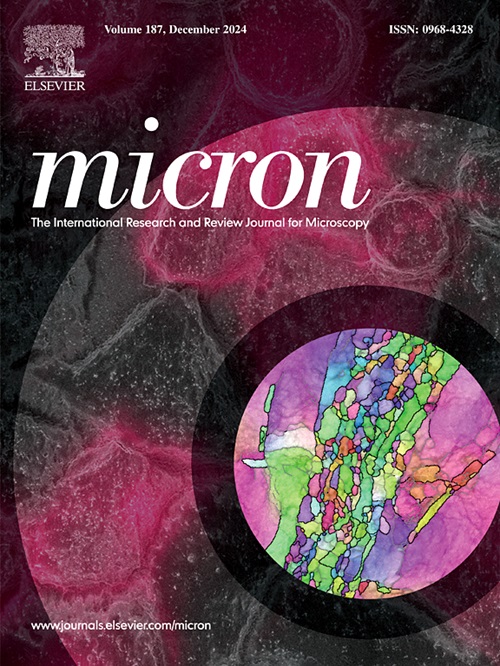天蝎花蜜:显微形态、荧光和超微结构。
IF 2.2
3区 工程技术
Q1 MICROSCOPY
引用次数: 0
摘要
各种各样的昆虫以花冠筒底部积累的花蜜为食,为Myosotis scorpioides小花授粉。迄今为止,对琉璃苣科植物蜜腺的解剖和超微结构研究较少。本研究的目的是分析不同组织水平的蝎姬蜜腺结构,特别强调其超微结构,这是迄今为止尚未研究的。这些研究是使用光、荧光、扫描电子和透射电子显微镜进行的。波纹状盘状蜜腺分布于子房基部,直径可达0.9 mm,高度约0.2 mm。蜜腺的上、背面有大量的蜜腺口。蜜汁中的酚类化合物表现出自身荧光。蜜腺表皮和分泌薄壁细胞的超微结构研究显示,细胞壁薄,液泡大小不一,细胞核中等大小,细胞壁内有胞间连丝,并有多种类型的染色质。在质体附近可见大量线粒体。此外,在细胞壁附近还观察到成群的双胞体、发育良好的粗内质网、大量的核糖体和不同大小的囊泡。我们在亚细胞水平上进行的研究表明,蝎姬蜜具有较高的代谢活性。花蜜中酚类化合物的存在既可以保护花的这一部分免受生物因素的影响,又可以增强花的气味,作为传粉者的引诱剂。本文章由计算机程序翻译,如有差异,请以英文原文为准。
Myosotis scorpioides L. (Boraginaceae) floral nectary: Micromorphology, fluorescence, and ultrastructure
The small flowers of Myosotis scorpioides are pollinated by various groups of insects feeding on their nectar accumulating at the base of the corolla tube. To date, only few studies have focused on the anatomy and ultrastructure of nectaries in plants from the family Boraginaceae. The aim of this study was to analyse the structure of the M. scorpioides nectary at different levels of organisation, with special emphasis on its ultrastructure, which has not been investigated so far. The studies were carried out with the use of light, fluorescence, scanning electron, and transmission electron microscopes. Undulated discoidal nectaries with a diameter of up to 0.9 mm and a height of about 0.2 mm were localised at the ovary base. There were numerous nectarostomata on the top and abaxial surfaces of the nectary. Phenolic compounds present in the nectary exhibited autofluorescence. The ultrastructural studies of nectary epidermis and secretory parenchyma cells revealed the presence of thin cell walls, different-sized vacuoles, medium-sized nuclei, plasmodesmata in the cell walls, and various types of chromoplasts. Numerous mitochondria were visible in close proximity to the plastids. Additionally, clusters of dictyosomes, well-developed rough ER profiles, and numerous ribosomes and different-sized vesicles often located near the cell walls were observed. Our study conducted at the subcellular level indicated high metabolic activity of the M. scorpioides nectary. The presence of phenolic compounds in the nectary may both serve as a protection of this part of the flower against biological factors and contribute to the intensification of the floral scent acting as a pollinator attractant.
求助全文
通过发布文献求助,成功后即可免费获取论文全文。
去求助
来源期刊

Micron
工程技术-显微镜技术
CiteScore
4.30
自引率
4.20%
发文量
100
审稿时长
31 days
期刊介绍:
Micron is an interdisciplinary forum for all work that involves new applications of microscopy or where advanced microscopy plays a central role. The journal will publish on the design, methods, application, practice or theory of microscopy and microanalysis, including reports on optical, electron-beam, X-ray microtomography, and scanning-probe systems. It also aims at the regular publication of review papers, short communications, as well as thematic issues on contemporary developments in microscopy and microanalysis. The journal embraces original research in which microscopy has contributed significantly to knowledge in biology, life science, nanoscience and nanotechnology, materials science and engineering.
 求助内容:
求助内容: 应助结果提醒方式:
应助结果提醒方式:


